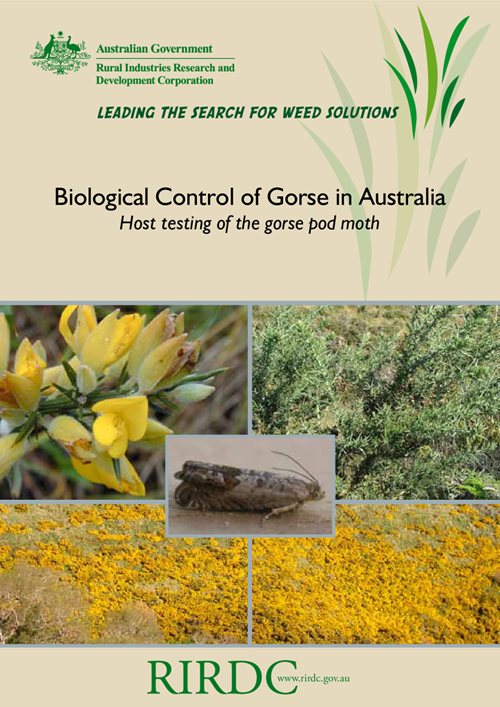This research was to confirm previous work on the host specificity of the gorse pod moth, Cydia succedana (Denis & Schiffermüller), to enable its release for biological control of gorse in Australia.
Three folivores and one seed feeder have already been released but, although efficacy studies have shown that these four agents will contribute to gorse control, an additional agent or agents will still be required to significantly reduce gorse vigour (Ireson et al. 2006).
The seed-feeding gorse pod moth is widely established in New Zealand and, in combination with the gorse seed weevil, has resulted in seed destruction at levels ranging from 75 to 85 per cent at some sites. Modelling studies (Rees & Hill 2001) have found this is the level of seed destruction necessary to cause a decline in gorse densities. The gorse pod moth therefore has the potential to play an important role in the biological control of gorse in Australia.





